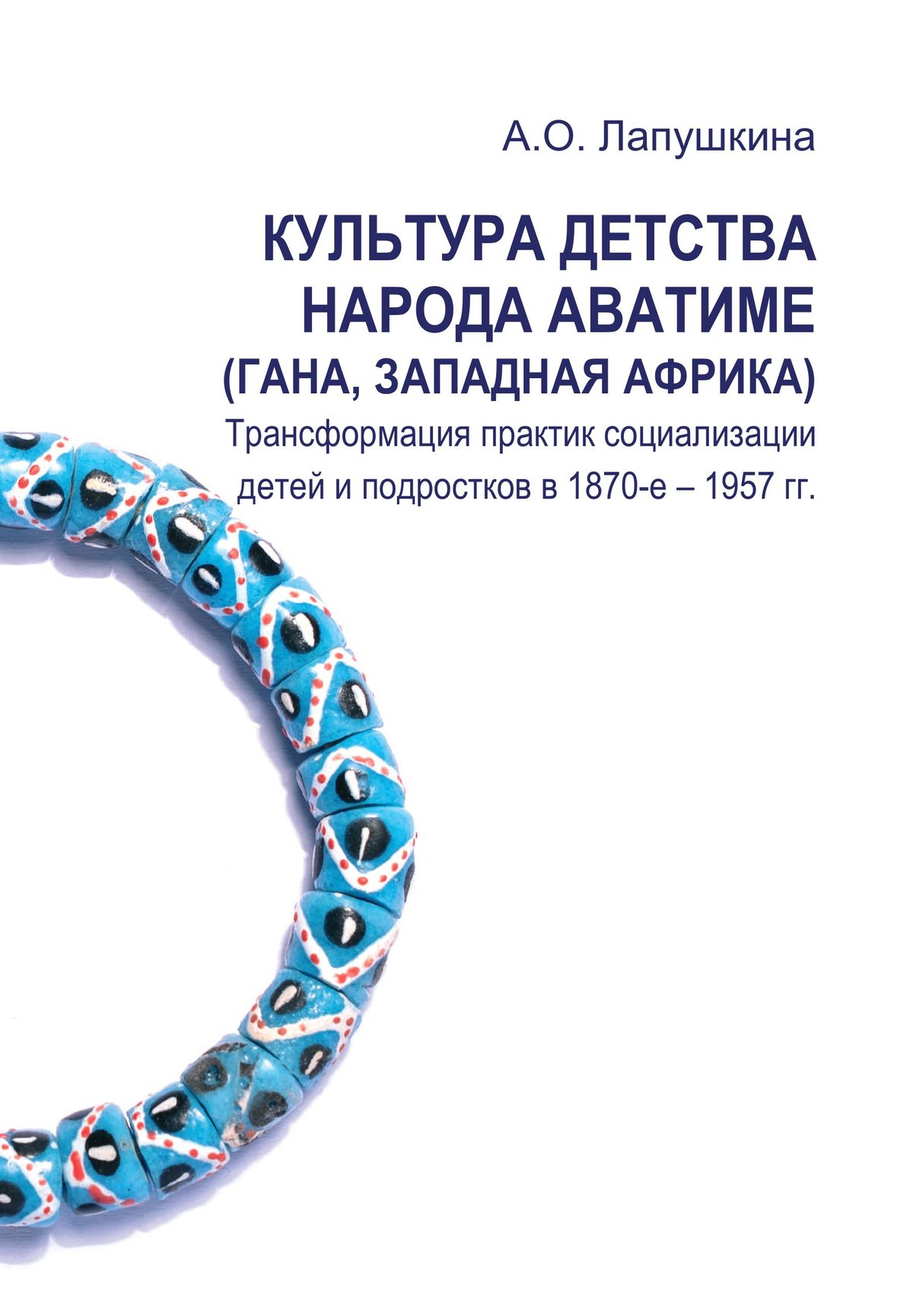Lapushkina A.O. "Childhood culture of the avatime people (Ghana, West Africa) Transformation of Socialization Practices in 1870s – 1957"
Rep. editor: corresponding member RAS, Dr. ist. sciences, prof. D.M. Bondarenko
M.: IAS RAS, 2023. – 258 p.
ISBN 978-5-91298-267-5
The problems of socializing the younger generation are of enduring importance, since they are inextricably linked to the continuity of traditions, values, moral standards, social gender roles and cultural patterns in general. Studying the transformation of socialization and education processes through the example of a particular people allows us to characterize its historical and cultural essence and continuity, as well as to analyze causal relationships that led to behavior patterns and worldviews in a society. The specifics of these dynamics on the African continent were largely determined by the activities of European missionaries.
In the late 19th century in the Volta region of modern Ghana, a religious and educational revolution began: the construction of a missionary station and a school in the mountain village of Amedzofe led to the active development of processes of so-called Europeanization of the Avatime people. In a broad context, the history of socio-cultural transformations among the Avatime in the 1870s – 1957 is a successful example of Africans’ adaptation to the changes brought by the Europeans. By the time Africa gained independence after World War II, western experts viewed Ghana as one of the leaders in terms of its development potential , primarily due to the literacy rate in the Volta region. These events had a profound impact on the systems of socialization of children and adolescents of the peoples of the Volta region.
The Avatime (self-name – kedeɔnɛ) are a small people inhabiting eight villages in the Volta region in the southeast of the today’s Republic of Ghana in West Africa. The total population of these villages is 32.5 thousand people (2021) . The Avatime language – Siya (otherwise called sideme, siyase) – belongs to the Kwa subgroup of the Niger-Congo group of the Niger-Kordofanian language family, according to the classification by J. Greenberg . During the Colonial Period, the Avatime lands were initially German possessions (1890–1914), and then became part of the League of Nations mandated territory under the control of Great Britain (1919–1957). British Togoland was annexed to the Gold Coast on December 13, 1956, and on March 6, 1957, became part of independent Ghana.
The Avatime region is in the central Volta, where the Ewe people are the ethnic majority. Since pre-colonial times, the issue of Avatime ethnic identity had an instrumentalist nature, which was typical for the small peoples of Togoland. Depending on the potential for a more advantageous position, peoples either joined larger ethnic groups, or, on the contrary, proclaimed their isolation. For this reason, for a long time, the Avatime people were mistakenly recognized by representatives of European religious missions and colonial authorities as one of the peoples of the Ewe group, so the collection and preservation of information about the history and culture of the Avatime themselves was not given importance.
During my expeditions to Ghana in 2011 and 2012–2013*, about a third of the Avatimes interviewed claimed that their ancestors had migrated from the city Notce together with Ewe peoples and believed that Avatime and Ewe had a common origin and culture. The elders attributed the results of the survey to a very concerning factor: loss of interest in their history, especially among the Avatime youth. Capturing the oral tradition of the Avatime in writing became an important part of the work, as it was no longer easy to find those who remembered some aspects of culture during the Pre-colonial and Colonial Periods.
In the complex modern world, the problem of balancing these two tendencies – the preservation of original institutions and inevitable borrowings from other cultures – has long established itself as one of the principal problems in many countries’ history . Today’s identity or modern “tradition” is the result of a long historical process of interweaving changes caused by both internal and external factors. Therefore, retrospective analysis of historical processes is necessary to study contemporary phenomena.








 Lapushkina A.O. "Childhood culture of the avatime people (Ghana, West Africa) Transformation of Socialization Practices in 1870s – 1957"
Lapushkina A.O. "Childhood culture of the avatime people (Ghana, West Africa) Transformation of Socialization Practices in 1870s – 1957"